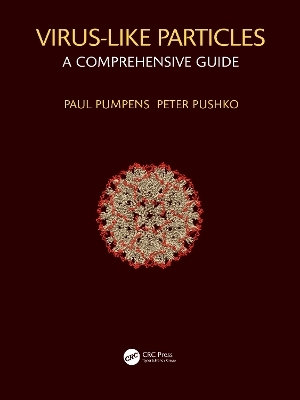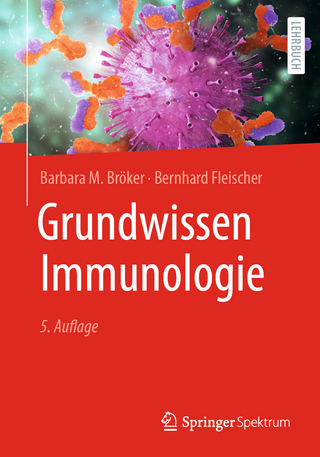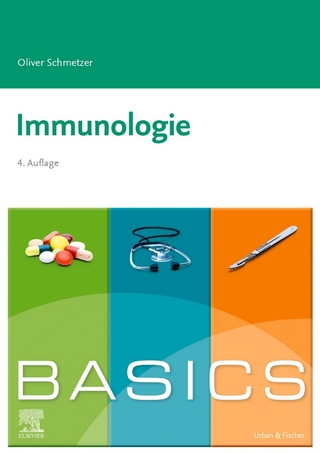
Virus-Like Particles
CRC Press (Verlag)
978-0-367-47677-9 (ISBN)
This book represents the first complete and systematic guide to the virus-like particles (VLPs) and their applications as vaccines, therapeutic tools, nanomaterials, and nanodevices. The grouping of the VLPs follows the most recent virus taxonomy and the traditional Baltimore classification of viruses, which are based on the genome structure and mechanism of mRNA synthesis. Within each of the seven Baltimore classes, the order taxon serves as a framework of the chapter’s arrangement. The term "VLP" is used as a universal designation for the virus-, core-, or capsid-like structures, which became an important part of the modern molecular virology. The 3D structures, expression systems, and nanotechnological applications are described for VLPs in the context of the original viruses and uncover their evolving potential as novel vaccines and medical interventions.
Key Features
Presents the first full guide to the VLP nanotechnology, classified by current viral taxonomy
Outlines specific structural properties and interconnection of the virions and VLPs
Explains generation and characteristics of VLPs produced by various expression systems
Offers up-to-date summary of VLPs designed as vaccines and delivery tools
Unveils interconnection of VLPs with novel organic and inorganic nanomaterials
Paul Pumpens, PhD, graduated from the Chemical Department of the University of Latvia in 1970 and earned his PhD in molecular biology from the Latvian Academy of Sciences, Riga and DSc from the Institute of Molecular Biology of the USSR Academy of Sciences, Moscow, USSR. Dr. Pumpens started his research career as a research fellow at the Institute of Organic Synthesis, where he conducted research from 1973 to 1989. He served as head of the Laboratory of Protein Engineering at the Institute of Organic Synthesis (1989-1990), as head of the Department of Protein Engineering at the Institute of Molecular Biology of the Latvian Academy of Sciences (since 1993, the Biomedical Research and Study Centre) in Riga (1990-2002), and as scientific director of the Biomedical Research and Study Centre (2002-2014). He served as a professor of the Biological Department of the University of Latvia from 1999 until 2013. Dr. Pumpens pioneered genetic engineering research in Latvia. He was one of the first in the world to perform successful cloning of the hepatitis B virus genome and the expression of hepatitis B virus genes in bacterial cells. His major scientific interests are in designing novel recombinant vaccines and diagnostic reagents and development of tools for gene therapy based on virus-like particles. Dr. Pumpens is an author of more than 300 scientific papers and issues or pending patents. He has edited, together with Dr. Yury E. Khudyakov, the Taylor & Francis book Viral Nanotechnology (2015) and authored the Taylor & Francis book Single-stranded RNA phages: From molecular biology to nanotechnology (2020). Dr. Peter Pushko graduated in 1984 from the University of Latvia, Riga, USSR and received his doctorate degree in Molecular Biology in 1990 from the University of Tartu (Tartu, Estonia) under mentorship of Dr. Paul Pumpens. He worked at the Institute of Molecular Biology (Riga, Latvia) on chimeric virus-like particles derived from bacteriophage fr and from hepatitis B virus. He completed postdoctoral studies at the Institute of Virology (Berlin, Germany), State Bacteriological Laboratory (Stockholm, Sweden) and Imperial Cancer Research Fund (Department of Pathology, University of Cambridge, U.K.) From 1994 to 2000, Dr. Pushko worked at the U.S. Army Medical Research Institute for Infectious Diseases (USAMRIID, Fort Detrick, Maryland, USA) as the National Research Council fellow. During this period, he developed RNA vector system from Venezuelan equine encephalitis (VEE) virus replicon and prepared experimental vaccines against Ebola, Marburg, and Lassa hemorrhagic fever viruses. In 2000-2010, Dr. Pushko worked at Novavax, Inc., (Rockville, MD), where he developed recombinant virus-like particles (VLPs) as vaccines against influenza. Since 2010, Dr. Pushko serves as the President and Chief Scientific Officer at Medigen Inc. (Frederick, Maryland), a biopharmaceutical company developing innovative vaccines for emerging infectious diseases and cancer. His scientific interests include vaccine development for emerging viruses, such as pandemic influenza, alpha-, arena-, and flaviviruses. He developed several novel vaccine technologies including VEE replicon vector, influenza VLPs, and DNA-launched live-attenuated vaccines. Dr. Pushko is the author of over 50 patents and 70 publications.
Section I. Double-stranded DNA viruses. Chapter 1. Order Caudovirales. Chapter 2. Order Herpesvirales. Chapter 3. Order Asfuvirales. Chapter 4. Order Rowavirales. Chapter 5. Other double-stranded DNA viruses. Chapter 6. Order Lefavirales. Chapter 7. Order Zurhausenvirales. Chapter 8. Order Sepolyvirales. Section II. Single-stranded DNA viruses. Chapter 9. Order Piccovirales. Chapter 10. Order Cirlivirales. Chapter 11. Order Tubulavirales. Chapter 12. Other single-stranded DNA viruses. Section III. Double-stranded RNA viruses. Chapter 13. Order Reovirales. Chapter 14. Family Birnaviridae. Chapter 15. Other double-stranded RNA viruses. Section IV. Positive single-stranded RNA viruses. Chapter 16. Order Hepelivirales. Chapter 17. Order Martellivirales: Bromoviridae. Chapter 18. Order Martellivirales: Togaviridae. Chapter 19. Order Martellivirales: Virgaviridae. Chapter 20. Order Martellivirales: Other Families. Chapter 21. Order Tymovirales. Chapter 22. Order Amarillovirales. Chapter 23. Order Nodamuvirales. Chapter 24. Order Tolivirales. Chapter 25. Orders Norzivirales and Timlovirales. Chapter 26. Order Nidovirales. Chapter 27. Order Picornavirales. Chapter 28. Order Sobelivirales. Chapter 29. Order Patatavirales. Chapter 30. Other positive single-stranded RNA viruses. Section V. Negative single-stranded RNA viruses. Chapter 31. Order Mononegavirales. Chapter 32. Order Bunyavirales. Chapter 33. Order Articulavirales. Chapter 34. Other negative single-stranded RNA viruses. Section VI. Single-stranded RNA viruses using reverse transcription. Chapter 35. Order Ortervirales. Section VII. Double-stranded DNA viruses using reverse transcription. Chapter 36. Family Caulimoviridae. Chapter 37. Order Blubervirales: Surface Protein. Chapter 38. Order Blubervirales: Core Protein.
| Erscheinungsdatum | 11.05.2022 |
|---|---|
| Zusatzinfo | 18 Tables, black and white; 191 Line drawings, color; 2 Line drawings, black and white; 32 Halftones, black and white; 191 Illustrations, color; 34 Illustrations, black and white |
| Verlagsort | London |
| Sprache | englisch |
| Maße | 210 x 280 mm |
| Gewicht | 1800 g |
| Themenwelt | Medizin / Pharmazie ► Allgemeines / Lexika |
| Medizin / Pharmazie ► Medizinische Fachgebiete ► Mikrobiologie / Infektologie / Reisemedizin | |
| Studium ► Querschnittsbereiche ► Infektiologie / Immunologie | |
| Naturwissenschaften ► Biologie ► Genetik / Molekularbiologie | |
| Technik | |
| ISBN-10 | 0-367-47677-0 / 0367476770 |
| ISBN-13 | 978-0-367-47677-9 / 9780367476779 |
| Zustand | Neuware |
| Informationen gemäß Produktsicherheitsverordnung (GPSR) | |
| Haben Sie eine Frage zum Produkt? |
aus dem Bereich


